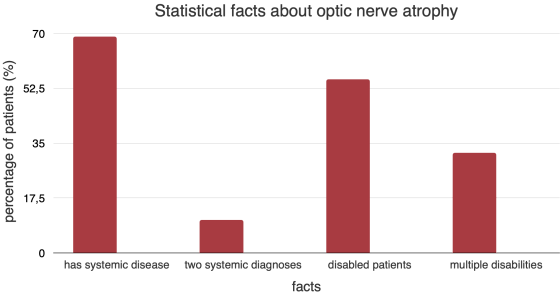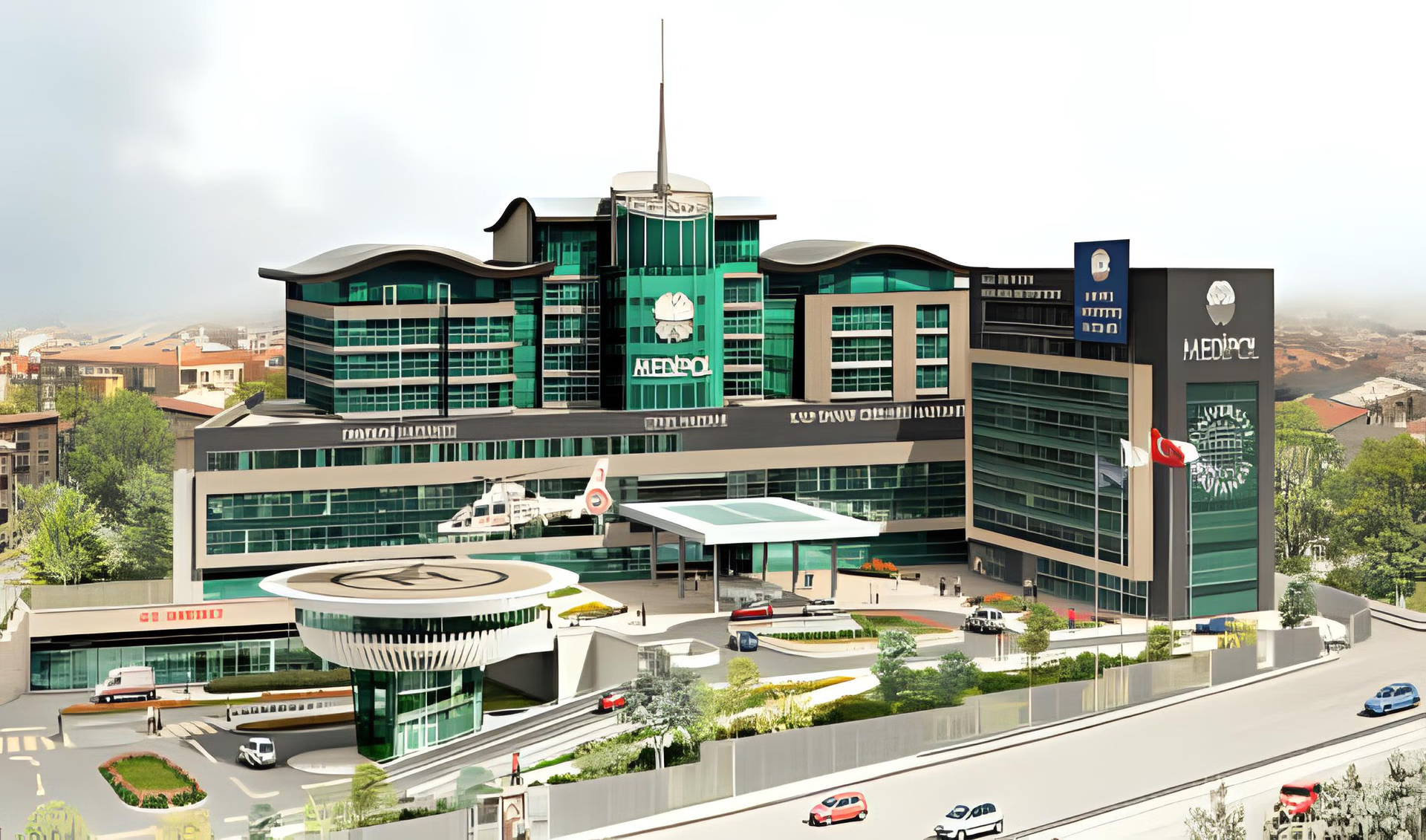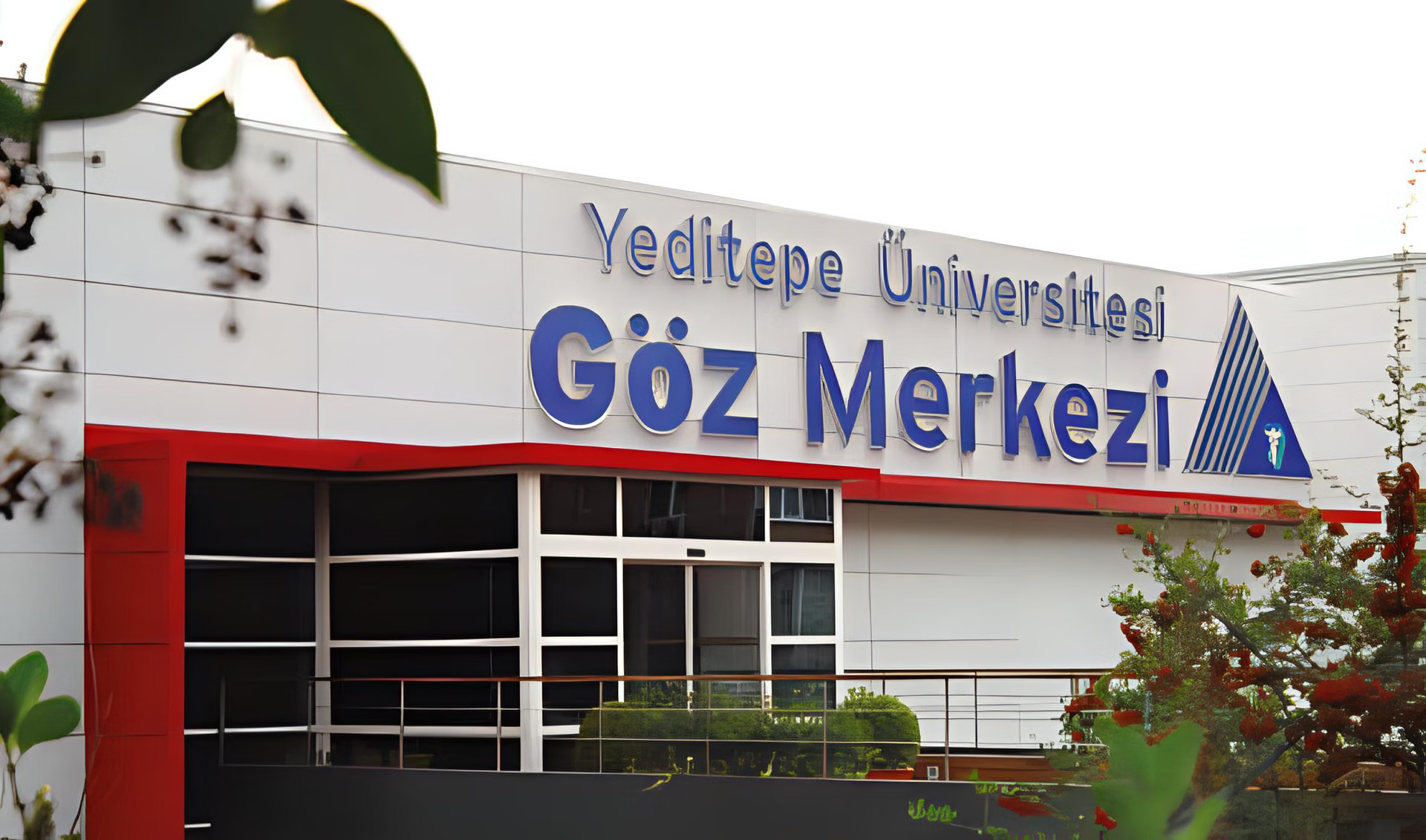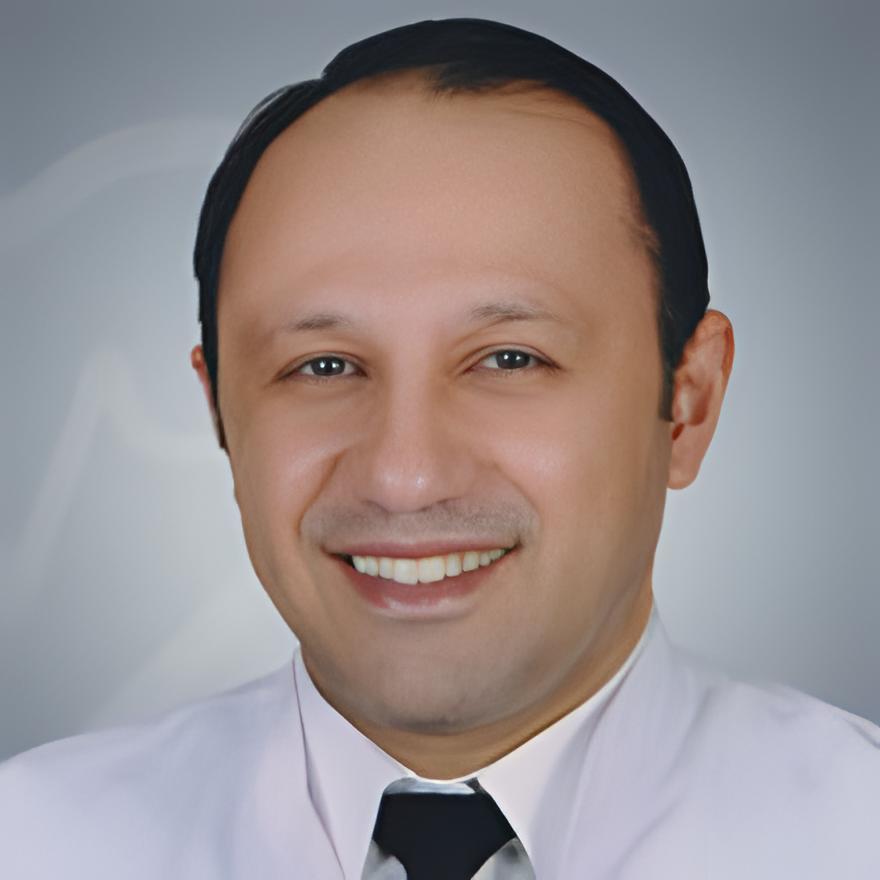Optic Nerve Atrophy Guide

55.3 percent of patients with optic nerve atrophy were disabled.
Optic nerve atrophy was one of the five leading causes of blindness.
Among non-glaucomatous optic nerve damage, intracranial lesions are the most common cause (26%).
Stem cell therapy from the patient’s own or donor stem cells can improve vision by up to 80%.
 Shortly about the optic nerve
Shortly about the optic nerve
As doctors say, the eyes are the "brain's window," so they can view its part directly. It is done by shining a bright light with an ophthalmoscope during an eye exam. It shows the retina, the innermost layer of the eye, and has a similar structure. The optic nerve sends impulses from the retina to the brain so that we can see. The optic nerve is in the middle of the retina. It is a round or oval area 1.5 to 2 mm wide. And it can also be seen in the eye's back.
The nerve has more than a million nerves that, like a cable, connect the visual cells in the retina to the part of the brain called the center of vision in the occipital lobe.
You could lose sight in one or both eyes if you hurt an optic nerve.
Many neurological diseases, like multiple sclerosis or stroke, can be directly diagnosed by changes in the optic nerve. And if the pressure in the brain goes up, maybe because of a brain tumor, this can cause the macula to swell and cause optic nerve atrophy. So, clinicians can use changes in the back of the eye to diagnose various conditions like high blood pressure, diabetes, glaucoma, age-related macular degeneration, or genetic diseases like retinal dystrophies.
 What is optic nerve atrophy?
What is optic nerve atrophy?
 An optic nerve is a group of nerve fibers that send images from your retina to your brain. Each thread sends part of the information about what is seen to the brain. If these nerve fibers get hurt, the brain doesn't get all this information about what you see, and your sight gets blurry. Optic nerve atrophy is when the optic “cable” loses some or most nerve fibers. The effects range from minor changes in vision to severe loss of central, peripheral, and color vision.
An optic nerve is a group of nerve fibers that send images from your retina to your brain. Each thread sends part of the information about what is seen to the brain. If these nerve fibers get hurt, the brain doesn't get all this information about what you see, and your sight gets blurry. Optic nerve atrophy is when the optic “cable” loses some or most nerve fibers. The effects range from minor changes in vision to severe loss of central, peripheral, and color vision.
Eye neuropathy is another name for the condition. Even though this disorder can have different causes, the result is always the same: nerve degeneration. Unfortunately, it can hurt people of all ages, from babies to adults.
Optic atrophy is not a disease. Instead, it is a sign of a condition that could be more serious. Optic atrophy is caused by hurting the optic nerve, which many diseases can cause.
 Who are at risk of optic nerve atrophy?
Who are at risk of optic nerve atrophy?
When someone has optic atrophy, something makes it hard for the optic nerve to send these impulses. Many things can cause the thinning of the optic nerve and slow impulse interference.
They include
- Glaucoma.
- Eye stroke is also called anterior ischemic optic neuropathy.
- The growth can put pressure on the optic nerve.
- Multiple sclerosis causes inflammation (swelling) of the optic nerve, called neuritis.
- Leber's hereditary optic neuropathy is a genetic condition in which a person loses sight first in one eye and then in the other.
- The optic nerve didn't form right, which is a congenital disability (the person is born with it).
Optic nerve atrophy can be caused by a tumor, an injury, a lack of oxygen or blood flow (ischemia), glaucoma, genetics, hydrocephalus, toxins, infections, and some rare degenerative diseases.
How to keep the optic nerves from shrinking?
People can protect their vision by taking these steps:
- Get regular eye exams – see an ophthalmologist annually or more frequently if needed.
- Stay at a healthy weight by working out and eating well. Extra weight is an additional risk factor for many illnesses.
- Get a health check-up regularly; such conditions as diabetes and high blood pressure can affect the eyes and can hurt the optic nerve.
- Seek help to quit smoking. Smoking makes you more likely to hurt your optic nerve or have other vision problems.
- Wear sunglasses for eye protection. When playing sports or doing other things that could hurt your eyes, it is recommended to wear goggles or safety glasses.
- Get help if something is wrong immediately. Eye problems, in most cases, develop slowly, with minimal discomfort. Do not risk the vision, do all on time.
 Are the exact optic atrophy symptoms exist?
Are the exact optic atrophy symptoms exist?
The optic nerve can be hurt in different ways by different diseases.
The patient may not have optic nerve atrophy because of the following symptoms. But if at least one of these signs is present, an appointment with an ophthalmologist is critical.
- The vision becomes blurry, less sharp, or not clear.
- The patient can have less peripheral (side) vision.
- Color vision and contrast sensitivity may also be affected.
- Pupils that don't close well in bright light. One eye isn't as bright as the other.
Most people with optic neuritis have pain in their eyes that gets worse when they move their eyes.
 Diagnostic tests
Diagnostic tests
An ophthalmic examination is an initial step in determining the issue and how to fix it. An ophthalmologist will use a tool (ophthalmoscope) to look into the eye. The doctor performs tests to evaluate the patient's color and side vision, as well as their visual acuity and pupillary reaction to light. The exam helps assess the optic disc (macula), also known as the optic nerve head, located at the eye's back, where the nerve enters the body. Because of the changes in blood flow, the optical disc tends to become less bright when a person has optic nerve atrophy.
If the results are inconclusive, additional testing may be required. Some of these procedures include a blood test and an MRI.
Optical coherence tomography (OCT), a new method, makes it possible to measure the retina in detail. We can see all ten retina layers and scan them within a few seconds with an almost microscopic resolution. OCT has made it much easier to diagnose and treat diseases of the retina and optic nerve in adults. In glaucoma, for example, the loss of nerve fibers can be found and used to help diagnose the disease and track its progress.
Until recently, OCT couldn't be used to look at kids because they couldn't stay still long enough. Hand-held scanners, on the other hand, are much better for kids. But not much is known about a "normal" retina in a child; things change as children grow and develop.
Where to go to treat optic nerve atrophy?
 Different ways to treat
Different ways to treat
Many patients ask: “Will it ever be possible to make the optic nerve grow back”?
When damage happens to the optic nerve, it can't be fixed since the cable of nerve fibers cannot heal itself or regenerate. Because of this, it is essential to get regular eye exams (especially if the condition runs in the family) and to make an appointment with an ophthalmologist as soon as possible if one's vision changes.
The main goal of the optic atrophy treatment is to keep the optic nerve from getting hurt anymore (if possible). For example, treating glaucoma by lowering the pressure that has built up in the fluid of the eye (which is what causes glaucoma) can stop atrophy from progressing in the future. The doctor may also suggest that you get glasses to help improve your eyesight.
Depending on what is causing the problem, people with optic nerve atrophy may improve their vision. If optic neuritis is to blame, the person can usually count on getting their sight back. When the inflammatory process goes away, symptoms decrease. If the patient has another optic neuropathy, their vision might not improve.
If glaucoma is caught early, it can be treated successfully, and the vision loss will happen more slowly. In the same way, if a tumor is found early enough, it can usually be treated to relieve pressure on the optic nerve and stop further damage.
What hospitals do we recommend?
 New treatment options
New treatment options
New therapies are being explored worldwide to treat optic nerve atrophy:
- Restorative therapy is a multidisciplinary method that uses both ophthalmology and neurology. In this therapy, weak electrical current pulses stimulate damaged retinal nerve cells and improve how signals get to the brain. It leads to good results. Electrical stimulation enhances the optic nerve's activity, leading to more action in the visual system and functional recovery. Restorative therapy is different from other treatments because it does not involve surgery. Instead, it uses non-invasive electrical stimulation of cones, rods, ganglion cells, and optic nerve fibers. The therapy doesn't replace cells that have been hurt. Instead, it makes the ones that are left work better.
- Stem cells can be extracted from a donor, a patient’s bone marrow, or fat tissue. Injections or transplants are both possible applications for stem cell therapy. The treatment is carried out in the specified order. As a result of the local anesthetic that is administered, the process causes almost no discomfort at all. In clinical settings, the therapy with stem cells appears promising:
- An improvement in eyesight of between 15 and 30 percent, depending on the severity of the condition;
- Recovery of one's capacity to differentiate between color varieties;
- In some circumstances, a person's vision may improve by up to 80 percent and more.
- Gene therapy is a method for treating diseases by correcting errors in the DNA of patients with those disorders. According to findings from recent studies, the gene that encodes the production of a protein known as protrudin is responsible for regenerating damaged nerve cells and preventing them from passing away. Protrudin has been demonstrated through research with some positive effects. The protein helps to heal the damaged nerve.
Doctors succeed when treating optic nerve atrophy because of recent advances in treatment methods. They cannot always restore one hundred percent of one's eyesight, but they can improve it to the point that it makes a difference in one's quality of life.
Who can help?
 Statistics and prognosis
Statistics and prognosis
Acute and long-term optic neuropathies cause permanent loss of sight. Loss of eyesight is often caused by damage to the optic nerve. There is one case of the disease for every 10,000 people worldwide.
In cases of optic nerve atrophy, the loss of vision is permanent. Only in rare instances has spontaneous recovery been reported. Most vision loss starts small and gets worse over time. Atrophy does not affect how smart someone gets or how long they live. Patients may have typical family and social lives, but sometimes it's hard for them to fit in at work.

For many years, children with optic nerve atrophy have been followed up at the Department of Pediatric Ophthalmology at the University Hospital Homburg/Saarland. Almost half of these children (46.7%) were born too early.
69.5% of all people with optic nerve atrophy also had a disease that affected the whole body. In 10.4% of cases, doctors found more than two diagnoses simultaneously. 55.3% of patients were diagnosed with optic atrophy, are disabled, and 31.9% had more than one disability.
The most common findings in pediatric patients diagnosed with optic nerve atrophy are prematurity and congenital brain abnormalities. These children have terrible medical conditions, including severe mental retardation, severe visual impairment, and various disabilities. As a result, receiving treatment in a facility with the appropriate level of expertise is essential for successful therapy.
Patients with persistent vision impairment caused by optic nerve atrophy can receive assistance from the specialists at AiroMedical, who collaborate with the foremost ophthalmologists worldwide. As a direct consequence of this, vision recovery is made possible.
The most important thing is not to waste time and get qualified assistance ASAP. We can help.
References:
- American Association for Pediatric Ophthalmology & Strabismus: Optic Nerve Atrophy
- Natural Eye Care: Optic Nerve Atrophy
- Eye & Ear Foundation of Pittsburgh: REGENERATING THE OPTIC NERVE
- National Library of Medicine: Optic Atrophy
- National Library of Medicine: Stem Cell Ophthalmology Treatment Study (SCOTS): bone marrow-derived stem cells in the treatment of Dominant Optic Atrophy
- Vision Eye Institute: Optic atrophy
- ResearchGate: Prevalence of Optic Atrophy and Associated Ocular and Systemic Diseases in a Department of Paediatric Ophthalmology

















